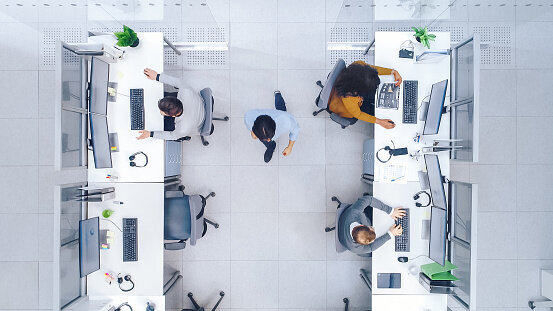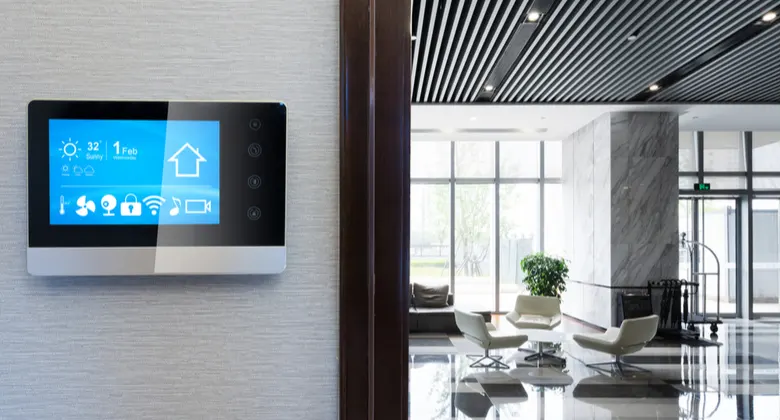How Remote Working will Change the Future of Offices and Office Layout
The coronavirus pandemic has dramatically changed the way of working for employees all over the world.
Where it has been possible, remote working hasn’t only become a temporary solution, but something that many organisations are considering to be the new normal. However, this change will trigger a need to optimise and/or reduce office real estate.
Smaller offices will be the norm
Even once COVID-19 is under control the move towards remote and flexible working practices will have accelerated significantly. Combined with increased levels of outsourcing, there will be a limited on-site presence for most employees.
The economic impact of the crisis will have wide-ranging and long-lasting effects for all sectors, so if real estate, maintenance and operational costs can be reduced, organisations will be looking to do so quickly.
So in this new normal, what will physical offices actually be used for? If day-to-day work can be carried out at home, why have an office at all?
While employees have been discovering the benefits of remote working over the last few months, they’ve also been discovering its drawbacks. Zoom or MS Teams calls can’t fully substitute for face-to-face meetings, and it will be important to provide a place where employees can break with isolation, interact with colleagues and conduct longer meetings. It will also be important to have a location for clients, customers or partners to go to.
3 reasons to retain your physical office
There are compelling reasons for organisations to retain a physical office, even if it is reduced in size.
Productivity
Many employees admit to being less productive at home, performing better in a structured environment with fewer distractions.
Collaboration & coordination
As mentioned above, remote calls can’t replace working collaboratively in the same room, particularly when it comes to creativity and longer sessions.
Socialising
While it will become essential for employers to offer remote working. It’s easy for employees to feel isolated when spending long periods of time working remotely. It can also have negative effects on engagement with the company.
Reducing costs by optimising what space you have
Did you know that one workstation in London could cost you between £650 - £1500 per month and that amenities such as lighting and HVAC systems can waste £700 per year on average if left running in rooms that are not in use?
Reduced building usage will allow organisations to optimise how rooms and floors are used, progressively filling up space from the bottom up, turning the power off on floors that are no longer required. Take a look at how and why, pre-COVID, National Grid reduced their real estate in this case study and made savings of £8million annually.
Working with an experienced workplace design consultant will identify where optimisation improvements can be made, with a 30% lower footprint is required on average. In fact, some studies have shown that real estate costs can be cut by as much as 50% by reducing the physical workspace to meet the new levels of demand.
It’s also important to not overlook the benefits of offering flexible and remote working for recruitment. Companies failing to offer this benefit will become the minority, making it harder for them to attract and retain the best talent - ultimately increasing the amount of money they need to spend on the recruitment process.
Business leaders and CEOs may have been hesitant about instigating a full-blown remote working programme, but the global working from home experiment has not only reassured them that it isn’t a development to be feared but put pressure on them to meet this new expectation. While many employees will be looking forward to getting back into the office and away from having to juggle conference calls with home schooling, the chance to work as part of a more fluid and variable workforce will still be desirable.
True Occupancy smart building technology makes this an achievable goal for organisations from all sectors. Find out more about how we can help you to reduce and optimise the workplace with occupancy sensors. Request a demo here.
Share this
You May Also Like
These Related Posts

4 Office Space Management Best Practices

How can Offices Save Space, Energy and Money?

Why is Space Management Important for an Office?
Connect with us
Need more information? Ready to get started? We're here to help, get in touch.


